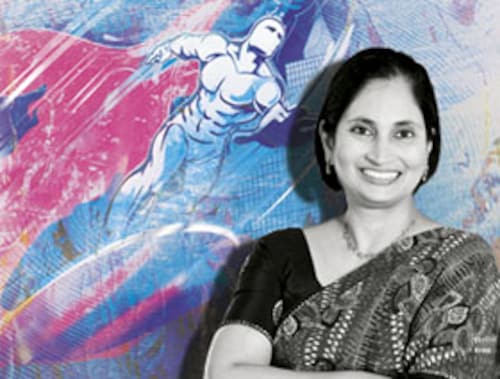Padmasree Warrior: The Next Internet
A media-rich experience and real-time collaboration delivered over a secure network — that’s what the Internet of the next decade will be


With degrees from IIT Delhi and Cornell, Warrior spent 23 years of her career at Motorola where she was chief technology officer (CTO). She led a global team of 26,000 engineers and directed Motorola Labs with an annual R&D budget of $3.7 billion. In 2007, she moved to Cisco as its CTO where she is responsible for technological innovation and strategy. When Barack Obama took over as president of the USA, she was among the two candidates considered by the administration to take over as federal CTO.
Over the last decade we built a very efficient means to transport information. We removed all the “bumps” in each lane to speed up data flow, and then added multiple lanes to move ever-larger volumes of traffic. Think about what happens when a multi-lane highway connects two isolated townships: Hospitals, schools, sports stadiums, power grids and communities start cropping up along the way, don’t they? Well similarly, since connectivity was provided by the Internet, entire industries (e.g. healthcare, education, energy, entertainment) have begun looking for ways to leverage the Internet to transform and grow their businesses. This opens up significant opportunities for a wide variety of players to innovate by delivering systems, solutions, architectures and services that add value. The winners in the future will be those that build the Next Internet.
As a global community, we are already in the process of building the Next Internet, which will serve us for the next decade and beyond. As billions more people and “things” connect to the Network, the Next Internet will enable an experience that is increasingly mobile, media-rich, collaborative, real time, secure and global in scale.
Here are four key differences between the first Internet and the Next Internet:
From a Messaging Platform to a Collaboration Platform: The first Internet was mainly a messaging platform and one could argue that email was the killer app. By contrast, the Next Internet will become a true collaboration platform. This means providing the platform for real-time collaboration across boundaries and firewalls to enable inter-company interactions and transactions with security. Social networking concepts need to be made more robust for the enterprise.
Price/Performance Ratio to Sustainability: As we built the first Internet, the focus was on achieving the best price/performance ratio possible. Issues like power consumption, cooling requirements and carbon emissions were an afterthought. Price/performance is still critical, but going forward, the Next Internet will be central as we work collectively to address the core issue of sustainability.
Vertically Integrated Architecture to Distributed, Virtualised Architecture: The previous architecture was, for the most part, a tight coupling between application software and server hardware. The Next Internet is being built atop an infrastructure that is much more distributed and highly virtualised. This lays the foundation for the shift to cloud computing, which in turn, will enable IT that is far more flexible, agile and cost-efficient.First Published: May 27, 2010, 09:18
Subscribe Now(This story appears in the Feb 01, 2019 issue of Forbes India. To visit our Archives, Click here.)